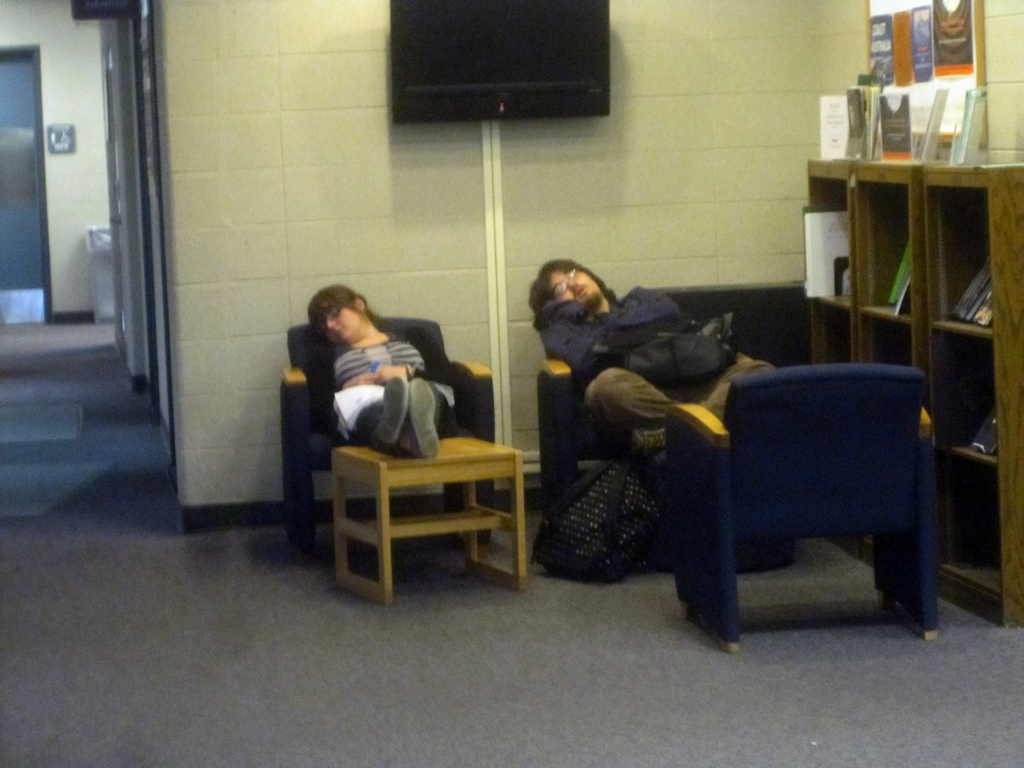Following on from my earlier post about ideas for introducing your library to readers – a thoughtful post from my colleague, Helen Snelling, who went to her very first IAML international conference in the summer. Although aimed more towards academic libraries; there’s plenty to think about whatever your readership. This was first posted on the MusiCB3 blog.
It’s getting to that time of year again when we start to plan the user education sessions for the new intake of music undergraduates. As always, the trick is not to re-invent the wheel, but to look at what others are doing and “borrow” their best practices where applicable!
A couple of months ago, I attended the IAML conference “Searching for Music in the Digital Age”. I attended a very interesting session entitled “Finding the Right Notes”, presented by Kirstin Dougan, who is Music and Performing Arts Librarian, University of Illinois at Urbana-Champaign. She was reporting on a small-scale, but in-depth study, of how students and researchers go about finding music resources. This study used both direct and observational methods to investigate how undergraduate and graduate music students undertook finding music scores and recordings, looking at whether they were more disposed to use You Tube and Google than trying to make sense of the array of choices and interfaces that libraries offer.
The study was conducted in the library with 15 students – 10 undergraduates and 5 graduates. They were given the same tasks to carry out and were observed doing them. Here are some of the tasks:
| Find | A recording of | Beethoven’s 5th symphony conducted by Bruno Walter |
| Find | An Audio or video of | Folk or traditional music from Thailand |
| Find | A vocal score of | Wicked |
| Find | Parts for | Schubert’s Death and the Maiden string quartet |
| Find | A video of | Rahsaan Roland Kirk performing “Seasons” |
| Find | A vocal-piano score of | The aria “Voi, che sapete” by Mozart |
The sessions were recorded using Camtasia software that captured screen activity and a moderator was present to clarify questions, but not give guidance. The participants also took part in a brief interview at the end of the session.

As a starting point, students frequently use both library and non-library sources – musicians often need multiple formats. For the purposes of this study, the session took place in the library, and so most of the time, they started with library tools, and only 7 students switched between library and non-library searches. If they didn’t understand the question, they went to Google first, and no-one used Grove!

Catalogue display systems that don’t make it easy to see what you have found without clicking several times can prove a stumbling block. Often you have to click at least one more time, and sometimes two or three times to see a table of contents or full notes.
This can lead students to make less good choices from what they can see easily or to give up, assuming that the library does not have what they need. A further consideration is that the multitude of title forms can make it difficult for searchers both to search and to evaluate what they have found.
So, what search methods should we teach music students: Boolean logic? Use of quotation marks? Advanced search screens? Author or keyword searching?
Only 20% of students used any kind of advanced searching, in part because the library catalogue (similar to Cambridge’s Library Search) does not require the use of boolean operators and uses word cloud technology. On only three occasions in the entire study did particpants look beyond the first page of search results, regardless of which tool they used. In searching for audiovisual formats, the first page of search results often did not include a record for a whole work, but just excerpts – a fact not noticed by some participants
In the task involving just audio, 60% of graduates and 50% of undergraduates chose physical recordings while the rest chose content on YouTube or just gave up!
In the task where video was sought, graduates were more likely than undergraduates to turn to YouTube. However, when the task allowed for either audio or video, 60% of both groups chose online options, including both subscription options and YouTube.
A student’s level of familiarity with a piece or genre (eg. that Rahsaan Roland Kirk is a jazz musician) was found to play a significant role in how confident they were with searching for something and whether they know they have found an acceptable item/version. This may seem obvious, but a student won’t always be searching for something known to them and Faculty staff don’t always give them much guidance on searching (ie. if the piece is part of a larger work, or which edition is preferred).
With thanks to Kirstin Dougan. The full version of this study is published here:
Dougan, Kirstin. 2015. Finding the right notes: an observational study of score and recording seeking behaviour of music students.
The Journal of Academic Librarianship 41: 61-67
